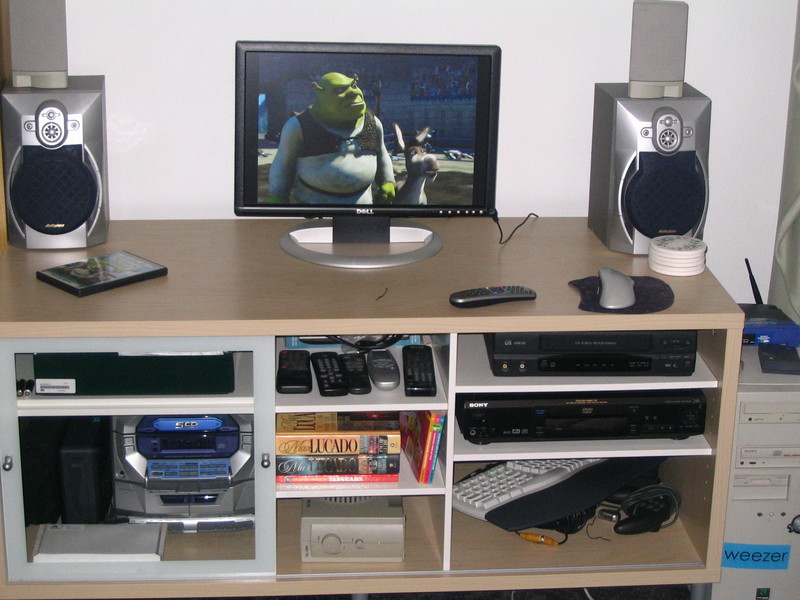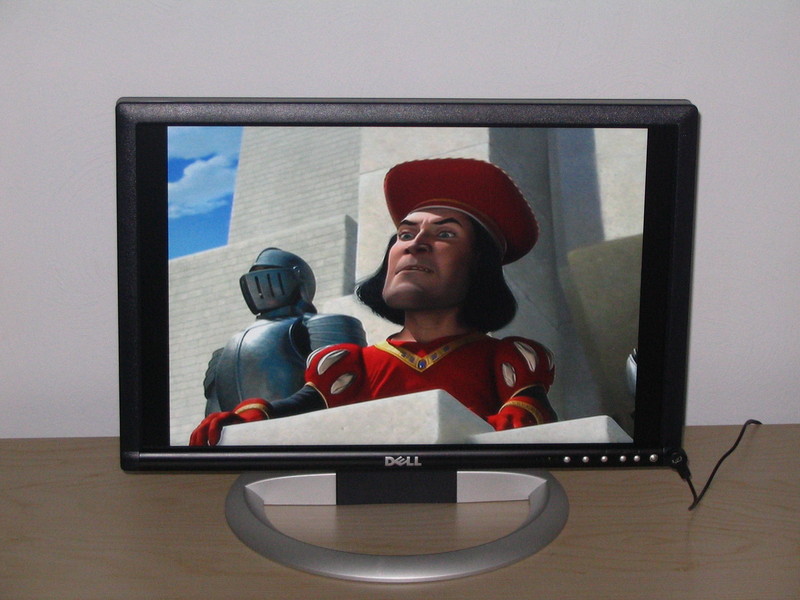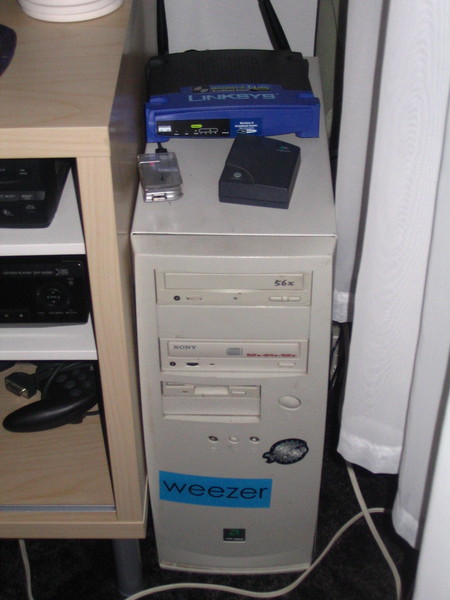In addition to all of the pcHDTV cards I bought last week, I also picked up a shiny new Dell 2005 FPW. It’s a beautiful 1600x1050 20.1" widescreen LCD. It’s also successfully replaced both the monitor and TV that we had sitting on our entertainment center in the living room. It took a little bit of Googling to figure out to get my video card to like the monitor, but it turns out my trusty MGA G400 works like a charm. The main thing to remember is that the monitor only handles a 60Hz refresh. Unlike a regular CRT where this would be unbearable, it’s not really noticeable on an LCD.
In short, here’s the lines you need to dump into your /etc/X11/XF86Config-4 or /etc/X11/Xorg.conf. I
don’t claim to have discovered these, but they do seem to work for me.
Section "Modes"
Identifier "16:10"
ModeLine "1680x1050" 146.2 1680 1960 2136 2240 1050 1080 1086 1089
-hsync +vsync
EndSection
Section "Monitor"
Identifier "dell"
ModelName "2005FP Widescreen"
UseModes "16:10"
HorizSync 30-83
VertRefresh 56-75
Option "DPMS"
EndSection
Section "Screen"
Identifier "Screen 1"
Device "Matrox Graphics, Inc. MGA G400 AGP"
Monitor "dell"
DefaultDepth 24
Subsection "Display"
Depth 24
Modes "1680x1050" "1280x1024" "1024x768" "800x600"
ViewPort 0 0
EndSubsection
EndSection
Section "ServerLayout"
Identifier "Default Layout"
Screen "Screen 1"
InputDevice "Generic Keyboard"
InputDevice "Configured Mouse"
InputDevice "Generic Mouse"
EndSection
This monitor is quite nice because in addition to taking VGA and DVI input, it also takes SVIDEO and composite input. Thus, in addition to having the Myth box plugged in, I’ve also got my DVD player plugged into the SVIDEO and and the VCR plugged into the composite input. I was able to once again get it hooked up to DPMS so my remote turns the monitor off, but I don’t know of way to force it to change inputs without getting off my butt. It’s got a USB hub on it, would it have been so hard to make it controllable over the USB port? And yes, I’ve already looked into this, the monitor shows up strictly as a USB hub, not as anything else.
So, without further ado, some pictures of my new MythTV hotness.

The fullll entertainment center, now with extra empty space

Closer shot of the Dell 2005FPW monitor

The actual MythTV box, a six year old Athlon 700
The first picture shows the complete entertainment center setup. It still is a bet messy, I really should hide some of the remotes and keyboard and mouse. I so rarely use them anyway. One of these days we’re going to get a better set of speakers too, but I think I’ll upgrade the box first.
The next pic shows the monitor playing the full frame version of Shrek. My DVD player doesn’t know when it’s outputting widescreen, so that makes things a little weird. It’s a first generation DVD player from about 1998 or so. But it does support component video and digital audio. Not like our cruddy little stereo could support it right now anyway. Fortunately, MythTV automagically detects the 16:10 aspect ratio of the monitor and scales the output properly. It also provides a variety of zoom modes which is very useful for watching HD letterboxed programs captured over NTSC. Even for standard full-frame using a 4:3 zoom mode seems to work nicely and capture most of the screen (only tested on Family Guy and The Simpsons so far).
The final shot shows the actual computer that runs my MythTV box. It’s my computer from undergrad, complete with stickers from the dot-com bust on it. A 700MHz Athlon with 768MB of ram and 245G of hard disk loaded with Ubuntu 4.10 (Warty Warthog). It runs well enough, but lately has been hiccuping a lot. I’m not sure why. Video capture is done via a Hauppauge WinTV PVR-250 and now a pcHDTV HD 3000. I can’t actually play back the HDTV on this system yet, so if I want to watch it, I need to transcode, which is really slow. I’ve been looking at getting a faster system, Intel machines seem to do better at the task, but the power consumption is insane not to mention the energy lost as heat off the chip. This means I’ll probably wait a bit longer (end of summer or so) and then pick up a nice Athlon 64 with the Winchester or Venice core to save on some power consumption. Also, atop the box you can see my second LinkSys WRT54G. This is loaded with DD-WRT firmware to provide wireless bridging and range extension to my cable modem in the study upstairs.